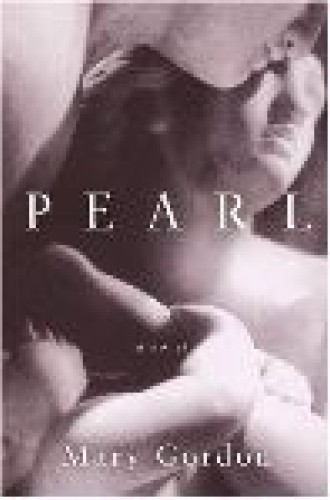Hunger Strike
In one of the most ambitious works of fiction to appear in recent years, Mary Gordon wrestles with large questions: What is worth living for? What does it mean to be human if we are unwilling to give up our lives for anything? What is the source of forgiveness? How do we hold on to hope?
Maria, a single mother, and Joseph, a family friend, are catapulted into struggling with these questions on Christmas Day 1998, when Maria learns that her 20-year-old daughter, Pearl, who is studying in Dublin, has chained herself to a flagpole in front of the American embassy. She has eaten nothing for six weeks, and has had nothing to drink for days. On the ground next to her is a statement declaring that she has decided to die in witness to the goodness of a boy named Stephen Donegan and in atonement for his death, for which she feels responsible; to show her support for the Northern Ireland peace agreement; and to testify to her belief that the truest thing about human beings is their will to do harm.
By the time Maria arrives in Dublin with Joseph, who acts as a foster father to the young woman, Pearl has been forcibly taken to a hospital and placed under the care of a psychiatrist specializing in eating disorders. Pearl has asked that her mother not be allowed to see her. For Maria, a woman who loves action, the slow waiting that ensues is a tortured time of reflection.
Trying to piece together what has happened to her daughter, Maria becomes acquainted with a group of ineffectual men with whom Pearl has gotten involved. They call themselves “the Real IRA,” and they oppose the peace agreement. Through them Maria hears the story of Stephen Donegan and meets his mother, Breeda. In a moment of anger at a stupid prank set up by the inept revolutionaries, Pearl had turned on Stephen, the weakest member of the group, the most easily harmed. When Stephen was killed in a traffic accident a few weeks later, Breeda accused Pearl of causing his death, of having taken away his will to live. Pearl agreed. Her action had revealed to her that she, too, is tainted by the will to do harm.
While Pearl struggles to forgive herself and to accept Breeda’s forgiveness, Maria learns to forgive the father from whom she cut herself off during the Vietnam war. Though she has lost her faith, Maria is a cradle Catholic who has a “religious default setting.” She can’t rid herself of a sense of the miraculous, or of her love of poems like George Herbert’s “Prayer.” No longer believing in a “prayable God,” Maria still needs the patterns of religion.
“Suppose the dead can forgive and be forgiven? How would the story end in that case?” Maria wonders. She realizes that allowing this possibility will force her into “the place of unbearable grief and loss.” It will force her to give up the stoneheartedness she has directed toward her father. The turning point for Maria comes when she decides to act “as if, somewhere, in a place she has no need either to locate or to name, her father is reachable, on the other side of words.”
This woman, who has always felt capable of handling everything, is able to help her daughter only after she can say, “Father, forgive me. Keep her safe. There is nothing I understand; there is nothing I can do.”
Woven through this novel is the theme of the longing for purity. Pearl wants to exchange her ineffectual life for a death which is “pure statement, pure act.” Joseph concocts a scheme for Pearl’s salvation. He will protect her, he decides, by taking her to a remote house in Italy where she can devote herself to the study of languages and live untainted by the world and the flesh.
A novel about a young woman who tries to starve herself to death also has much to say about the body. Maria remembers the delight she took in Pearl’s body and thinks about the way adolescents treat their bodies. She tries not to think about what starvation has done to her daughter’s body, or what is being done to it in the hospital. A doctor sees anorexia as another aspect of the desire for purity—holding to an ideal of perfection that is really an ideal of death.
“Why is it that it’s life we want?” Pearl asks her mother. Maria realizes that only a religious answer will do. Neither love, friendship, beauty, pleasure, virtue nor fame seem “real enough, strong enough, to be a proper answer to Pearl’s question.” If the horrors of life were placed on one arm of a scale and its goodness on the other, she thinks, the first would be much, much heavier. Only some thumb placed on the side of goodness to give it more weight could make them equal. Maria needs this thumb to tip the scale. “She doesn’t know who does the tipping, or why the tipping happens, or if it might stop.” Yet, as with forgiveness, Maria takes the leap of faith.
Combining personal and public issues and exploring issues of religious faith in a world of doubt is a lot for a novel to take on. Gordon tries to sustain the weight of her ambitious book by using a self-conscious narrator typical of the Victorian and Edwardian novel. The device is not entirely successful. Alternately philosopher, chronicler and judge, omniscient but with questions to raise, the narrator demands our attention and takes up a lot of space. More than once I wanted to say, “Let me draw my own conclusions!” But the narrator’s pervasive presence is a small problem in a novel as alive with characters and questions as is this story of Maria, Joseph and their Pearl of great price.





